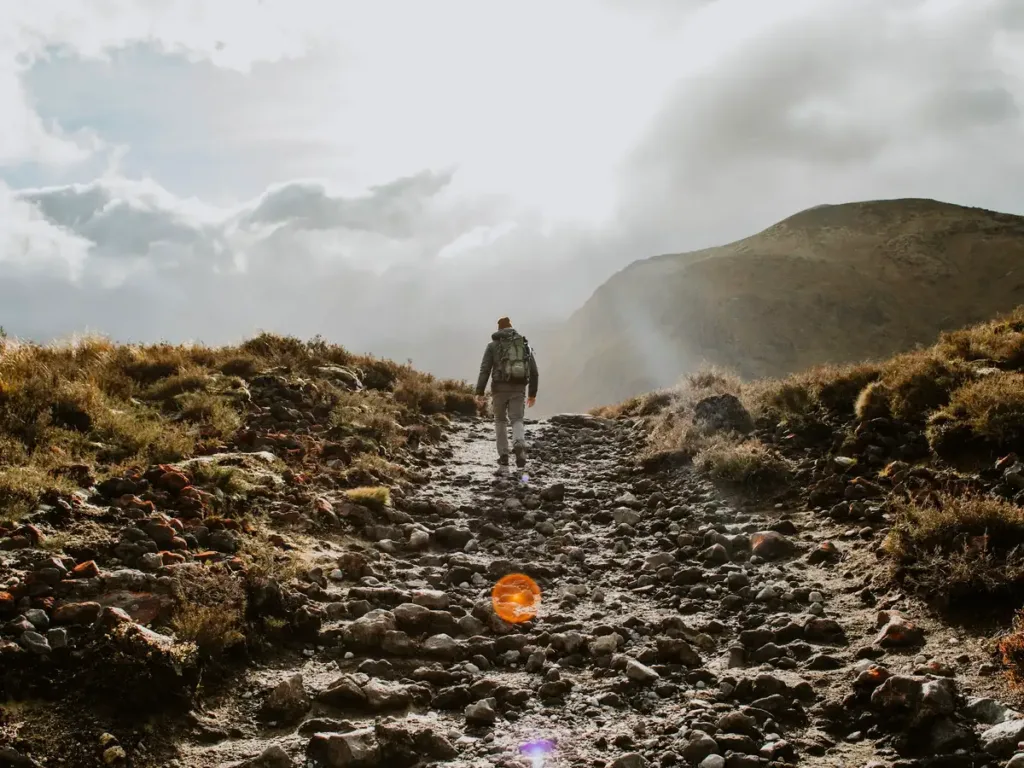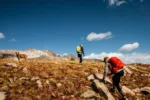Lessons of Minimalism: The Philosophy of Ultralight Hiking
This post may contain affiliate links. This means that we may receive a small commission from purchases through those links. Read more in our affiliate disclosure.
Can a backpack really teach us about life? If you’re an ultralight hiker, the answer is a resounding yes. Journey with us as we traverse the trails of minimalism and intentionality, shedding weight not just from our packs but from our lives. This isn’t just about walking lighter; it’s about living lighter. Are you ready to step off the beaten path and discover a different way of living?
The Birth of Ultralight
The art of ultralight hiking was born out of an antithetical rebellion against the heavy burdens conventional backpackers carried. As the pioneers of this movement saw it, backpackers had become more like mules, trudging under the weight of their gear, rather than intrepid adventurers soaking in the splendor of their surroundings.
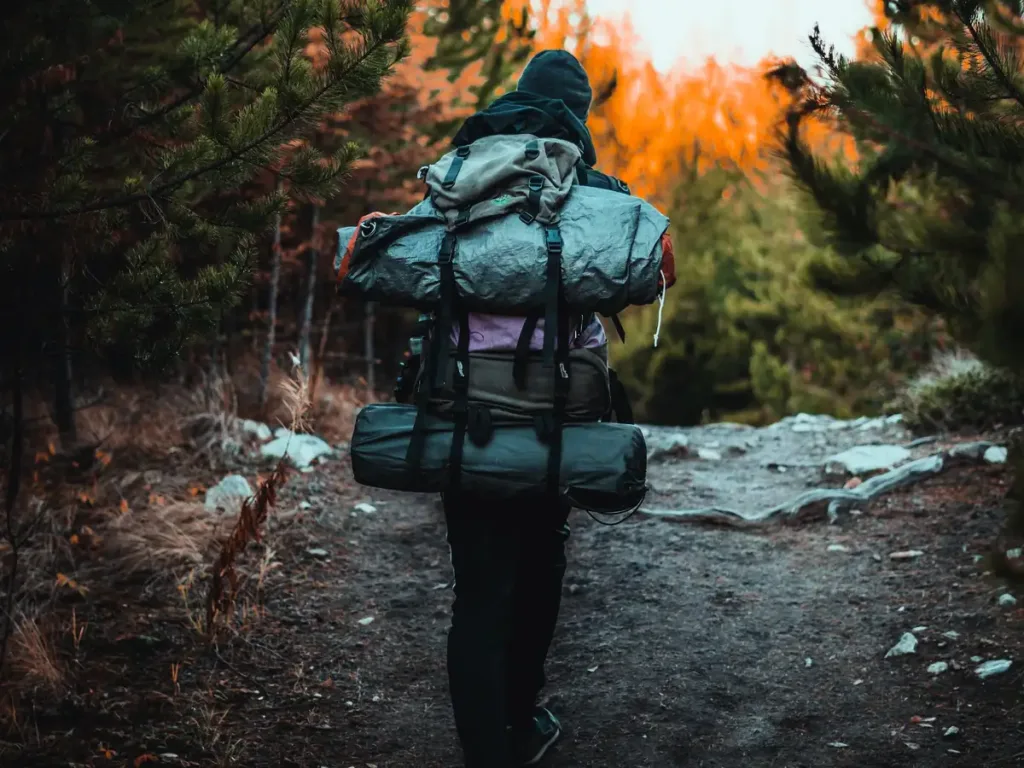
Consider the Appalachian Trail speed record breaker, Ray Jardine. In the early 1990s, Jardine, an engineer and inveterate tinkerer, started questioning the “heavier is better” philosophy of outdoor gear. He embarked on a relentless quest to shave ounces off his pack, even going so far as to build his own equipment. His efforts resulted in a paradigm shift in the world of hiking, aptly detailed in his groundbreaking book, “Beyond Backpacking” (see on Amazon).
Ultralight hiking began to gain traction among outdoor enthusiasts who sought the liberation that comes from carrying less. Over time, as advancements in technology made lightweight materials more accessible and affordable, this approach has broadened its appeal, striking a chord with anyone seeking to free themselves from the burdensome clutter of modern life.
In essence, ultralight hiking is more than just a trend or an approach to wilderness travel. It’s a philosophy. It’s about saying no to unnecessary weight, redefining our relationship with material possessions, and embracing simplicity in a world that often champions excess.
Shedding Weight, Gaining Perspective
Once, a fellow hiker told me, “When you carry less, you feel more.” It sounded almost Zen-like to me, but as I delved deeper into ultralight hiking, the profundity of those words dawned on me.
Imagine you’re embarking on a week-long hike. You’ve packed everything you think you’ll need – a sizable tent, an array of cooking utensils, an extensive first-aid kit, a hefty camera for capturing the scenery, and, of course, food and clothes aplenty. Before you’ve even started, you feel the strain. Every step becomes laborious. Your focus is split between the grueling effort of lugging your gear and the natural beauty around you.
But what if you could lighten your load?
In the ultralight philosophy, every single item in your pack should be scrutinized. Is it necessary? Can it serve multiple purposes? Is there a lighter alternative?
This is the process of shedding weight. It’s about paring down to the essentials, removing items that serve more as a comfort blanket than a true necessity. It’s about relinquishing the ‘just-in-case’ mentality and embracing the ‘just-enough’ mindset.
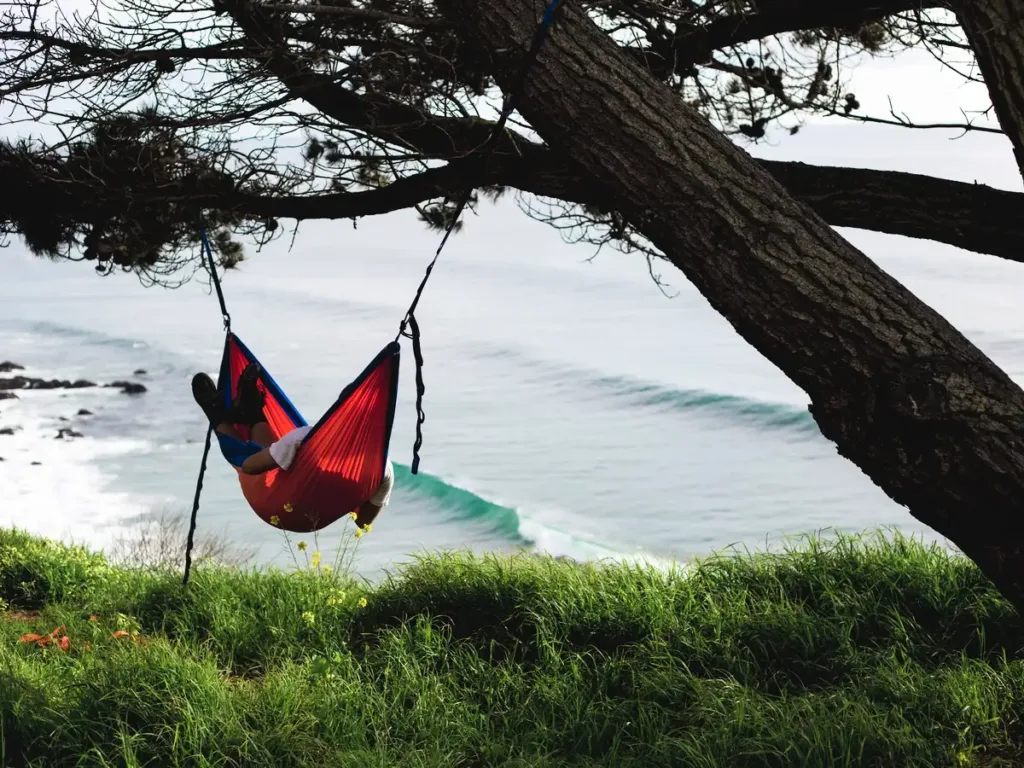
And there’s a strange beauty in this simplicity. A lighter pack allows you to cover more miles with less effort, to move with agility rather than lumbering heavily. It allows you to immerse yourself in your surroundings without the constant reminder of a heavy burden. You begin to see the world around you with fresh, unburdened eyes.
What’s more, the lessons learned on the trail seep into everyday life. You start questioning the excess in your life off the trail, the metaphorical weight you’ve been carrying around. You see the beauty in having less but enjoying more, in removing clutter and focusing on what truly matters.
Yes, shedding weight from your backpack does lead to a lighter footfall on the trail, but it also leads to a lighter footprint in life. And this, my friends, is gaining perspective.
Quality Over Quantity
It’s a common misconception that going ultralight means giving up on comfort or functionality. On the contrary, ultralight hiking emphasizes the value of quality, multi-functional gear. It’s not about forgoing necessary items but rather about smartly investing in versatile and durable products.
Consider the example of a sleeping system. Rather than carrying a bulky tent, many ultralight hikers opt for a high-quality hammock or tarp setup. These options are not only lighter but also highly adaptable to different weather and terrain conditions. They epitomize the ultralight ethos – less weight, more functionality.
Similarly, an ultralight backpacker might swap a full-fledged cook set for a single, lightweight pot and a compact stove. The gear doesn’t just reduce weight; it simplifies the cooking process, making it a streamlined, efficient part of the day.
The same principle applies to clothing. Why carry a different outfit for each day when a few well-chosen, high-quality items can be mixed, matched, and layered to meet various conditions? A lightweight merino wool shirt, for example, is not only warm but also odor-resistant, quick-drying, and comfortable across a range of temperatures.
By choosing quality over quantity, you invest in gear that lasts longer, performs better, and ultimately offers a higher return on every ounce. This selective, intentional approach aligns perfectly with the ethos of minimalism – an ethos that extends beyond your backpack into everyday life.
The Tread of Mindfulness
Mindfulness. It’s a word that seems to have found its way into every corner of contemporary culture, from yoga studios to corporate boardrooms. But what does it have to do with ultralight hiking? Quite a lot, as it turns out.
As an ultralight hiker, you are unburdened by the excess weight that would normally keep you focused on the grueling physicality of the journey. You become acutely aware of the weight of your pack, the rhythm of your steps, the breath entering and leaving your body. This is mindfulness in action – you are present, engaged, attuned to the here and now.
Hiking in this way, you notice things you might have missed otherwise. The iridescent sheen of a bird’s wing in flight, the whispering rustle of leaves underfoot, the fragrance of pine in the air – these become more than just background details. They are experiences to be savored, to be fully present for.
This practice of mindfulness extends to your interactions with the environment. You learn to tread lightly, to leave no trace, to engage with the wilderness in a way that is respectful and sustainable. You become more than a passive observer; you become an active participant in the natural world.
In a broader context, mindfulness and ultralight hiking both encourage us to step away from the noise and clutter of modern life, to strip away the non-essentials, and to focus on the moment at hand. Whether you’re navigating a rocky trail or a complex life decision, the principles remain the same: be present, be aware, be intentional.
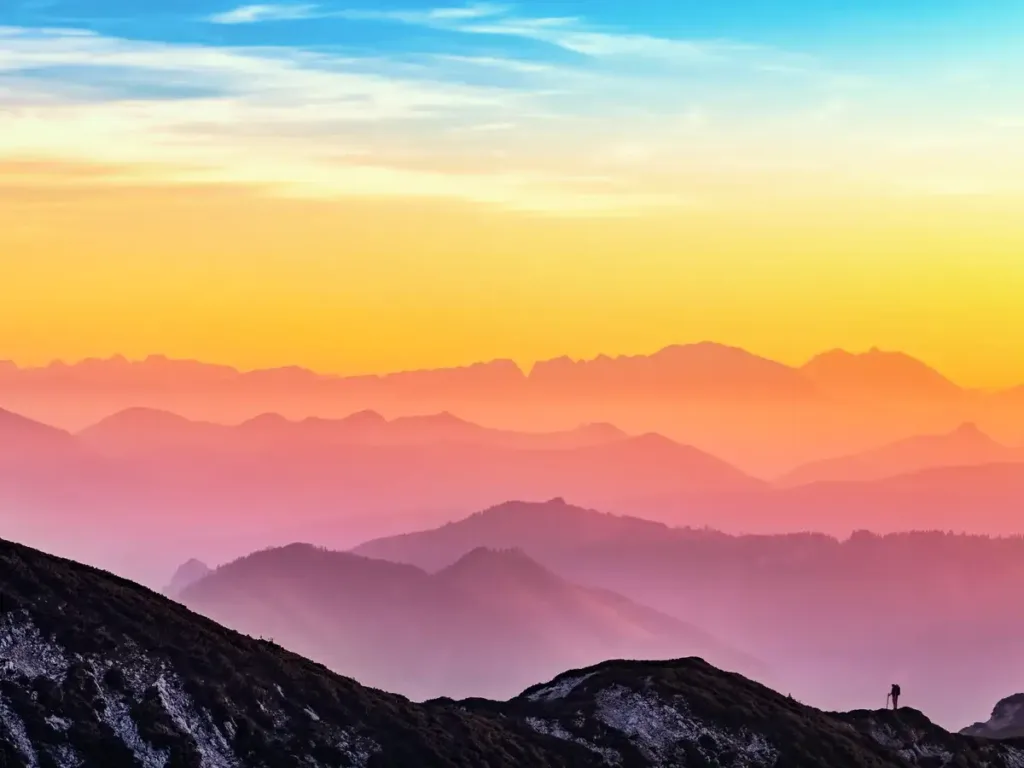
The Intersection of Minimalism and Intentionality
Ultralight hiking and minimalism share more than a few similarities. Both espouse a less-is-more philosophy, both promote intentionality in choice, and both challenge the prevalent more-is-better mentality of our modern consumer society. But what exactly do these connections mean, and how do they influence the way we live?
In the realm of ultralight hiking, every piece of gear is a deliberate choice. It’s an exercise in intentional living that demands a clear understanding of one’s needs and wants. You pick every item based on its utility, its weight, its durability. Nothing enters the backpack by accident or on a whim. This approach naturally spills over into other areas of life, making you more conscious of your consumption patterns, more intentional in your choices, more attuned to your actual needs versus superficial wants.
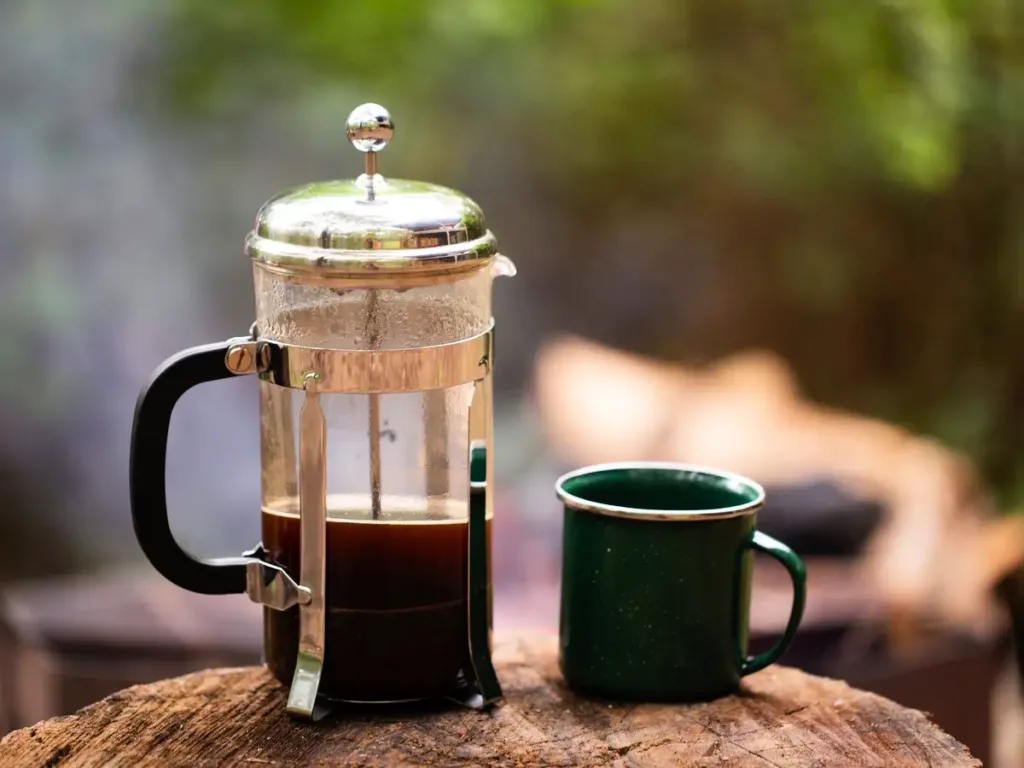
Now, this is where minimalism steps in. Like ultralight hiking, minimalism isn’t about deprivation or living with as little as possible. It’s about living with intention. It’s about making space—literal and metaphorical—for the things that truly matter. Minimalism invites us to question our needs, to differentiate between need and want, and to make conscious, deliberate choices accordingly.
By practicing ultralight hiking, you’re already halfway to living a minimalist lifestyle. You understand the importance of necessity over excess, of quality over quantity, of making deliberate choices rather than mindless accumulation.
Conservation and Respect for Nature
Ultralight hiking isn’t just about personal transformation; it’s also about how we interact with the world around us. The simplicity and intentionality at the heart of ultralight hiking naturally extend to a deep respect for the environment.
When you’ve pared your gear down to the bare essentials, you begin to see the wilderness not as a backdrop for your adventure, but as an integral part of the experience. You learn to tread lightly, both metaphorically with your lightweight pack, and literally, by minimizing your impact on the environment.
Ultralight hikers often adopt the principles of ‘Leave No Trace’ – a set of outdoor ethics promoting conservation. It means respecting wildlife, leaving what you find, disposing of waste properly, and minimizing campfire impacts, among other things.
But it’s not just about following a set of rules; it’s about cultivating an attitude of reverence towards nature. After all, the beauty of the trail – the rustle of leaves, the coolness of a stream, the whisper of the wind – that’s what makes the journey worthwhile.
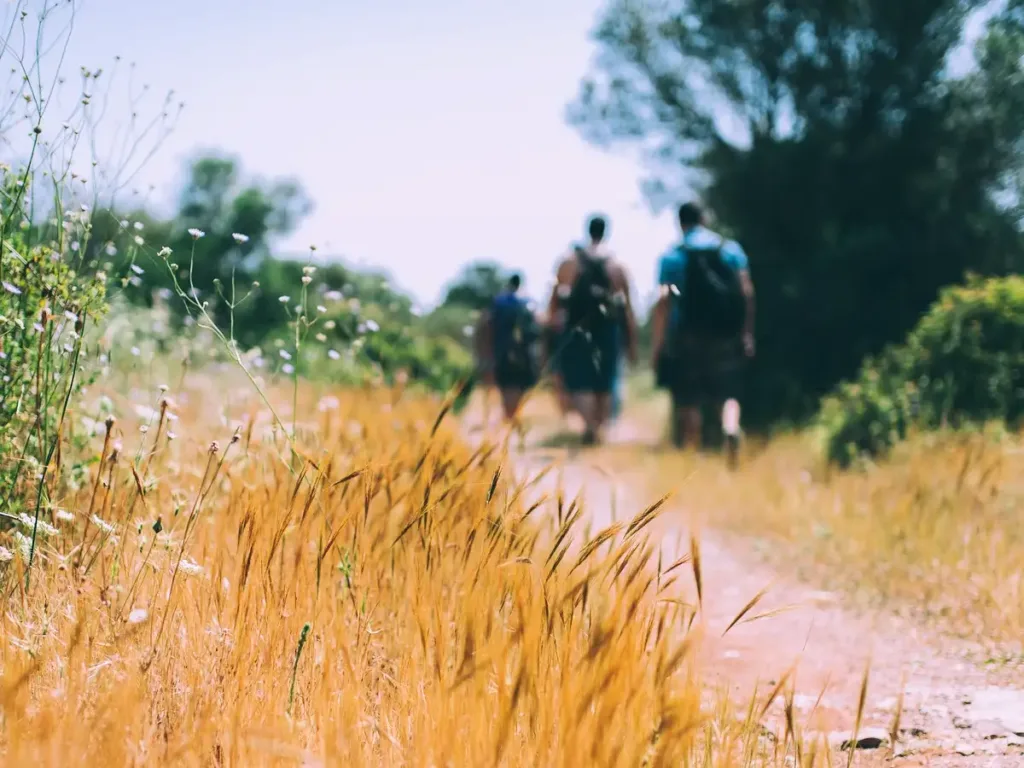
And this conservationist mindset doesn’t stop at the trailhead. It permeates other aspects of life, encouraging more sustainable living practices, a more conscious consumption of resources, and a greater appreciation for the natural world.
From Trail to Daily Life
As you might have gathered by now, the philosophy of ultralight hiking extends well beyond the trail. The principles of lightness, mindfulness, minimalism, intentionality, and respect for nature, while profoundly influential in the wilderness, can be just as transformative in our day-to-day lives.
The ‘shedding weight’ concept goes beyond the literal ounces and pounds in a backpack. It’s a metaphor for letting go of the clutter, distractions, and unnecessary burdens that weigh us down mentally and emotionally. By identifying and focusing on what truly matters, we can live more fulfilled and meaningful lives.
The mindfulness and intentionality we practice on the trail can also help us be more present in our daily interactions and more deliberate in our decisions. Whether it’s spending quality time with loved ones or working on a passion project, being fully present can enrich the experience.
The minimalist and conservationist aspects of ultralight hiking can inspire us to adopt more sustainable lifestyles. Whether it’s reducing waste, recycling more, or making mindful purchasing decisions, every small action can contribute to a larger, collective effort to preserve our planet.
In essence, ultralight hiking is more than a pastime—it’s a perspective, a way of life. It provides a lens through which we can view our lives differently, challenging us to think about what we truly need, what we value, and how we can tread lightly—on the trail and in life.
